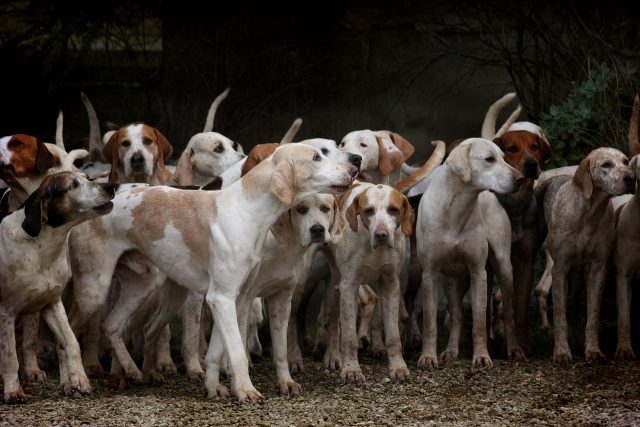Understanding your dog’s behavior is crucial for building a strong and healthy relationship with them. Dogs are pack animals by nature, and they need a clear leader to feel secure and confident. If your dog doesn’t see you as their pack leader, it can lead to various behavioral issues and misunderstandings. Identifying these signs can help you address and correct your dog’s behavior, fostering a more harmonious relationship. This article explores ten clear indicators that your dog doesn’t see you as their pack leader. From ignoring commands to displaying dominant behaviors, these signs reveal underlying issues in your relationship with your dog. Recognizing and addressing these behaviors will help you establish your role as the leader and improve your dog’s overall well-being.

1. They Ignore Your Commands
One of the most obvious signs that your dog doesn’t see you as their pack leader is their tendency to ignore your commands. If your dog consistently fails to respond to basic commands such as sit, stay, or come, it indicates a lack of respect for your authority. This behavior shows that they do not see you as someone to listen to or follow. Effective training and consistency are essential to establishing yourself as the leader in your dog’s eyes.
2. They Pull on the Leash
A dog that constantly pulls on the leash during walks is demonstrating a lack of respect for your leadership. This behavior indicates that they see themselves as the leader, setting the pace and direction instead of following you. Proper leash training, with consistent reinforcement of boundaries and walking rules, can help establish your role as the pack leader and make walks more enjoyable for both of you.
3. They Exhibit Dominant Behaviors
Dominant behaviors such as growling, snapping, or guarding resources (like food, toys, or resting spots) are clear signs that your dog doesn’t see you as the pack leader. These behaviors indicate that your dog is trying to assert their dominance over you, challenging your authority. Addressing these behaviors with positive reinforcement training and setting clear boundaries is crucial to establishing your leadership.
4. They Disobey House Rules
If your dog frequently disobeys house rules, such as jumping on furniture they’re not allowed on, stealing food, or making a mess indoors, it’s a sign that they do not respect your leadership. Consistent enforcement of house rules and setting clear expectations can help your dog understand their place in the household hierarchy and respect your authority.
5. They Demand Attention
Dogs that constantly demand attention, such as barking at you, nudging you for petting, or jumping on you, are displaying signs of a lack of respect for your leadership. This behavior indicates that they see themselves as in charge, dictating when and how they receive attention. Training your dog to understand appropriate ways to seek attention and reinforcing positive behavior can help establish your role as the leader.
6. They Exhibit Anxiety When Left Alone
Separation anxiety can be a sign that your dog doesn’t see you as a stable and confident leader. Dogs that don’t have a strong leader may feel insecure and anxious when left alone, leading to destructive behaviors or excessive barking. Building your dog’s confidence through gradual desensitization and creating a consistent routine can help reduce anxiety and reinforce your role as a calm and dependable leader.
7. They Are Overprotective
Overprotective behavior, such as barking at strangers, growling at guests, or becoming aggressive when someone approaches you, indicates that your dog feels the need to protect you because they don’t see you as the leader capable of handling threats. Establishing yourself as the pack leader involves demonstrating calm and assertive behavior in these situations, showing your dog that you are in control and capable of providing protection.
8. They Show Signs of Aggression
Aggression towards other dogs or people is a significant indicator that your dog doesn’t see you as the pack leader. This behavior reflects their belief that they need to assert dominance or protect themselves without relying on your guidance. Addressing aggressive behavior with professional training and behavior modification techniques is essential to establishing your leadership and ensuring your dog’s safety and well-being.
9. They Refuse to Follow Your Lead
If your dog frequently refuses to follow your lead, whether on walks, during training sessions, or in everyday activities, it’s a sign that they do not respect your authority. This behavior indicates that they see themselves as independent or even superior to you. Consistent training, positive reinforcement, and clear communication can help reinforce your role as the leader and encourage your dog to follow your guidance.
10. They Are Possessive of Their Space
Dogs that are possessive of their space, such as growling or snapping when you approach their bed or resting area, are displaying signs of a lack of respect for your leadership. This behavior indicates that they see these spaces as their territory and you as an intruder. Establishing boundaries and demonstrating calm assertiveness when addressing these behaviors can help your dog understand that you are the leader and that all spaces are shared.

Recognizing these signs can help you understand the dynamics of your relationship with your dog and identify areas that need improvement. By addressing these behaviors and establishing yourself as the pack leader, you can create a more harmonious and respectful relationship with your dog. Consistent training, clear communication, and positive reinforcement are key to building a strong bond and ensuring your dog’s well-being. The relationship between a dog and their pack leader is built on trust, respect, and mutual understanding, making it one of the most rewarding aspects of having a pet.
 Toledo, United States.
Toledo, United States.